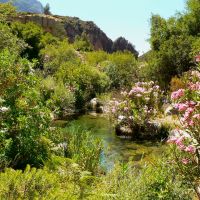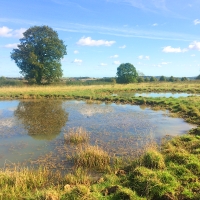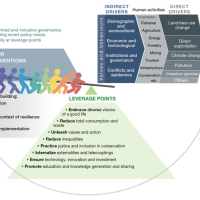Perspective: Should the wildlife media pay for ecosystem services?
![By Kloer Phil, U.S. Fish and Wildlife Service [Public domain], via Wikimedia Commons](https://biofreshblog.files.wordpress.com/2013/09/film_tv_crew_in_wildlife_show.jpg?w=728)
By Kloer Phil, U.S. Fish and Wildlife Service [Public domain], via Wikimedia Commons
The logic of Payments for Ecosystem Services (PES) proposes that companies that utilize ecosystem services in the production of their goods (termed service buyers) should pay a fee to those who manage or maintain the relevant aspects of the ecosystem (services providers). The Catskills Watershed is a famous example of PES in action.
In December 2012 some colleagues and I published a thought-piece in Science asking whether the logic of PES could be extended to media corporations who produce natural history content and are therefore users of ecosystem services. Our aim was to prompt discussion on the boundaries of PES approaches: in what cases are they appropriate/inappropriate?
To this end we outlined a possible PES scheme for media corporations that blends certification and a trust fund model. In brief, the idea is that a consortium (maybe of NGOs) would established a certification scheme for natural history content whereby certified broadcasters would pay a royalty into a trust fund (similar to that used in water funds, see Goldman-Benner et al 2012) and include an interactive facility whereby viewers could find out about, and donate to, relevant conservation projects. The trust fund would be independently administered and finance conservation initiatives based on transparent priorities.
Today Oryx has published a forum which takes up this discussion. Sven Wunder (who produced the most widely accepted definition of PES – see Wunder 2007) and Doug Sheil argue against the notion. In a nutshell they argue a) that this level of innovation with the PES concept would undermine its utility and b) that the wildlife media contributes to conservation in many and varied ways and increasing the production fees of natural history films would be counter-productive.
 For me debating the question of whether the wildlife media should embrace PES also helps interrogate and unpack the concept of ‘cultural’ ecosystem services and in particular whether they can be valued in economic or market terms, Our discussion on the wildlife media raises the interesting point that cultural ecosystem services are in fact co-produced by companies, publics and nature. As a result the distinction between service buyer and service provider is blurred and transaction value likely impossible to ascertain
For me debating the question of whether the wildlife media should embrace PES also helps interrogate and unpack the concept of ‘cultural’ ecosystem services and in particular whether they can be valued in economic or market terms, Our discussion on the wildlife media raises the interesting point that cultural ecosystem services are in fact co-produced by companies, publics and nature. As a result the distinction between service buyer and service provider is blurred and transaction value likely impossible to ascertain
In her video post Professor Strang commented that ‘the concept of cultural ecosystem services misses the point of culture’ and I tend to agree.
Paul Jepson
Forum Articles
To facilitate this discussion the journal Oryx and Cambridge University Press have kindly made the forum articles open access for 3 weeks. Our Science forum article can be accessed via my university web-page
Jepson, P., Jennings, S., Jones, K.E., & T. Hodgetts (2012) Entertainment Value: should the media pay for conservation? Science, 334(6061): 1351-135
Wunder, S. & D. Sheil (2013) On taxing wildlife films and exposure to nature
Jepson, P & S. Jennings (2013) Should the wildlife media pay for conservation? A Response to Wunder & Sheil
Wunder, S. & D. Sheil (2013) Wildlife film fees: a reply to Jepson & Jennings
Other papers
Goldman-Benner et al 2012 Water Funds and Payments for Ecosystem services: practice learns from theory and theory learns from practice Oryx 46:55.
Wunder, S (2007) The efficiency of payments for ecosystem servcies in tropical conservation. Conservation Biology 21, 48-58
Read other articles in our Special Feature on Freshwater Biodiversity and Ecosystem Services














